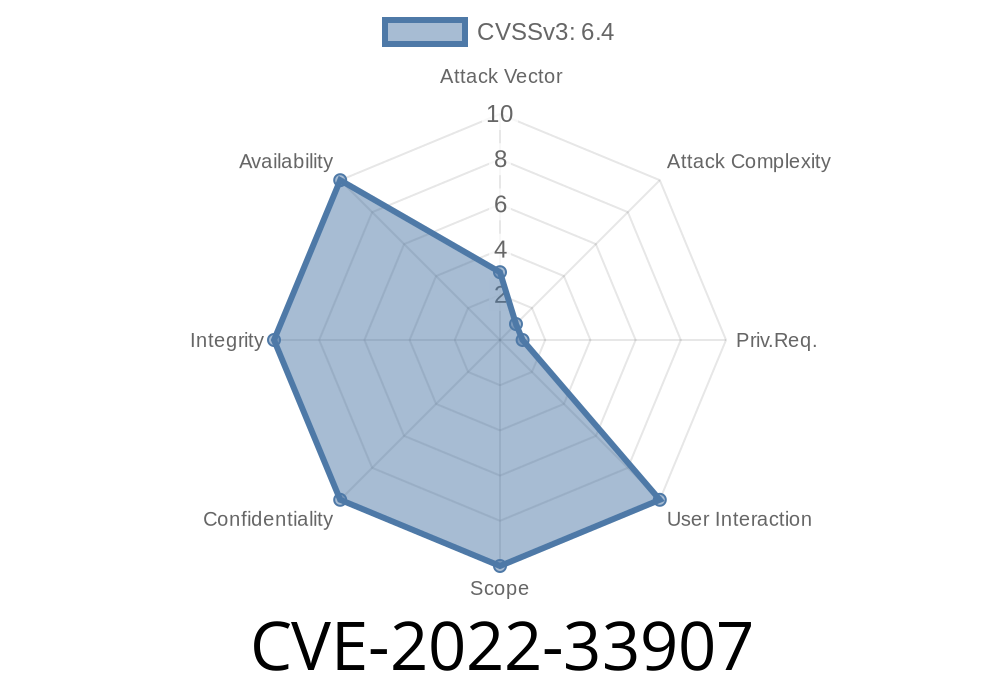A recent security vulnerability, CVE-2022-33907, was discovered by Insyde engineers based on a general description provided by Intel's iSTARE group. This vulnerability revolves around DMA transactions targeting input buffers used for software System Management Interrupt (SMI) handlers by the IdeBusDxe driver, potentially leading to SMRAM corruption through a Time of Check, Time of Use (TOCTOU) attack. This post will delve into the details of this exploit, examining the affected code snippet and providing links to the original references, patches, and further investigation.
Details
The CVE-2022-33907 vulnerability stems from DMA transactions targeting input buffers used by software SMI handlers in the IdeBusDxe driver. These DMA transactions can lead to SMRAM corruption through a TOCTOU attack. The Time of Check, Time of Use (TOCTOU) attack occurs when the software checks a condition, and an attacker changes the condition between the check and the software's execution, causing the software to risk unintended execution or potential corruption.
Code Snippet
// Assume that the input_buffer is the memory region for the software SMI handler
// and that the buffer is submitted to DMA devices for processing.
// In this example, the DMA initiation function initiates a DMA transaction.
void input_buffer_processing(uint8_t *input_buffer, size_t buffer_size)
{
// Check for a valid buffer and size
if (input_buffer == NULL || buffer_size == )
{
return;
}
// Retrieve the DMA device.
dma_device_t *dma_dev = get_dma_device();
// Initiate a DMA transaction using the input_buffer.
wait_for_dma_completion(transaction);
// Process the input buffer after DMA transaction completion.
process_input_buffer(input_buffer, buffer_size);
}
The above code snippet checks the input buffer and initiates a DMA transaction using the input_buffer. However, due to the TOCTOU attack, the input buffer's condition might change between the check and the actual DMA transaction, leading to the possibility of SMRAM corruption.
You can find the security patch at the following link
- https://www.insyde.com/security-pledge/SA-2022049
Recommendations
To mitigate this vulnerability, it is highly recommended that you update to one of the patched kernel versions listed above. Additionally, make sure to keep your systems up to date with the latest security patches and follow best practices for a secure software development environment.
Conclusion
CVE-2022-33907 is a significant vulnerability that can result in SMRAM corruption through a TOCTOU attack via DMA transactions targeted at input buffers utilized by the IdeBusDxe driver's software SMI handler. By updating the kernel to the patched versions and following security best practices, you can safeguard your systems from this exploit.
Timeline
Published on: 11/14/2022 23:15:00 UTC
Last modified on: 02/14/2023 12:15:00 UTC
